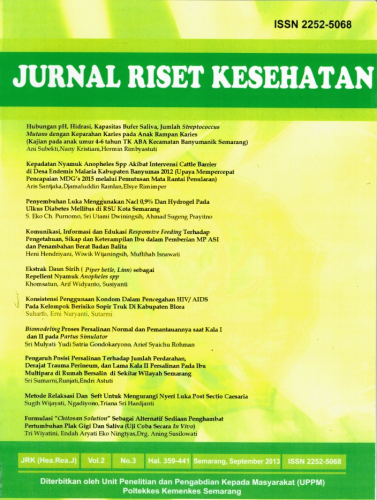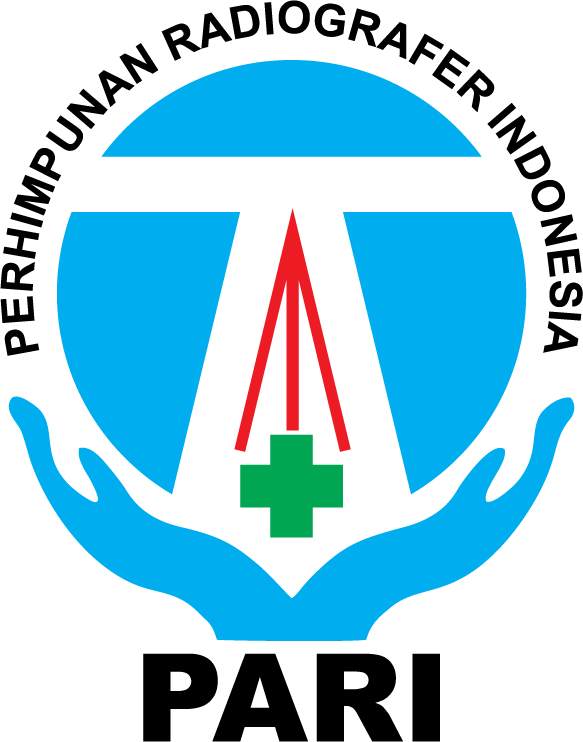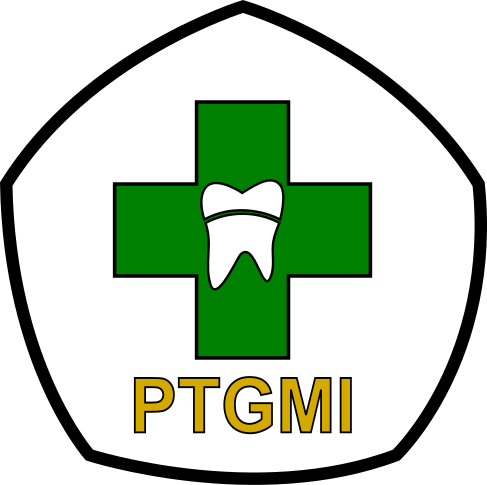WORKLOAD, REPETITIVE WRIST MOVEMENTS, YEARS OF SERVICE WITH CARPAL TUNNEL SYNDROME
Abstract
Carpal Tunnel Syndrome (CTS) is an occupational disease caused by disruption of the hand position which is constantly and is often associated with activities that use the hands for a long time can affect nerves, blood supply to the hands and wrists. This study aims to determine the relationship between workload, repetitive wrist movements and work time with carpal tunnel syndrome in cantel eyelash workers. Type of research is observational with cross-sectional approach. The sample in study were 50 eyelash workers who were part of the cantel. The results of this study are there is no relationship between workload and the incidence of CTS (p=1.000), there is a relationship between repetitive wrist movements with the incidence of CTS (p=0.031) and There is a relationship between years of service and the incidence of CTS (p=0.007). The conclusion is repetitive wrist movements performed by workers during years of work are a risk factor for carpal tunnel syndrome. So that to reduce this risk, it is necessary to stretch your hands before working, every two hours of work and finish working.
Keywords
Full Text:
PDFReferences
Agustin, C. P. M. (2012). Masa Kerja, Sikap Kerja dan Kejadian Sindrom Karpal pada Pembatik. KEMAS: Jurnal Kesehatan Masyarakat, 7(2), 170–176. https://doi.org/10.15294/kemas.v7i2.2814
Association, A. I. H. (2011). The Occupational Environment: Its Evaluation, Control and Management. Anna D.H (ed.). Virginia: American Industrial Hygiene Association.
Ayu, D. (2017). Faktor Risiko Suspect Carpal Tunnel Syndrome pada Pemasang Payet (Studi di Dukuh Cemani Desa Bategede Kecamatan Nalumsari Jepara). (A2A214011/012/S1FKM/V/2017). Unpublished Undergraduate Thesis. Universitas Muhammadiyah Semarang. Semarang.
Bahrudin, M., Perdana, R. L. P., & Sultana, H. F. A. (2016). Hubungan Masa Kerja dengan Kejadian CTS pada Pekerja Pemetik Daun Teh. Saintika Medika: Jurnal Ilmu Kesehatan Dan Kedokteran Keluarga, 12(1), 24–29. https://doi.org/10.22219/sm.v11i2.4205
Demiryurek, B. E., & Gündoğdu, A. A. (2018). Prevalence of Carpal Tunnel Syndrome and Its Correlation with Pain amongst Female Hairdressers. International Journal of Occupational Medicine and Environment Health, 31(3), 333–339. https://doi.org/https://doi.org/10.13075/ijomeh.1896.01068
Fitriani, R. N. (2012). Faktor-Faktor yang Berhubungan dengan Dugaan Carpal Tunnel Syndrome (CTS) pada Operator Komputer Bagian Sekretariat di Inspektorat Jenderal Kementerian Pekerjaan Umum Tahun 2012. (108101000016). Unpublished Undergraduate Thesis. Universitas Islam Negeri Syarif Hidayatullah. Jakarta.
Ibrahim, I., Khan, W. S., Goddard, N., & Smitham, P. (2012). Carpal tunnel syndrome: a review of the literature. The Open Orthopaedics Journal, 6, 69–76. https://doi.org/10.2174/1874325001206010069
Juniari, G. A. R., & Triwahyudi, A. (2015). Hubungan antara Masa Kerja terhadap Keluhan Carpal Tunnel Syndrome (CTS) pada Pegawai Perempuan di Kampus Universitas Dhyana Pura yang Bekerja Menggunakan Komputer. VIRGIN: Jurnal Ilmiah Kesehatan Dan Sains, 1(2), 162–168.
Kurniawan, B., Jayanti, S., & Setyaningsih, Y. (2008). Faktor Risiko Kejadian Carpal Tunnel Syndrome (CTS) pada Wanita Pemetik Melati di Desa Karangcengis, Purbalingga. Jurnal Promosi Kesehatan Indonesia, 3(1), 31–37. https://doi.org/10.14710/jpki.3.1.31-37
Kusuma, S. P. (2009). Higene Perusahaan dan Kesehatan Kerja. Jakarta: Gunung Agung.
Kusuma, S. P. (2012). Higiene Perusahaan dan Kesehatan Kerja. Jakarta: Sagung Seto.
Lazuardi, A. I. (2016). Determinan Gejala Carpal Tunnel Syndrome (CTS) pada Pekerja Pemecah Batu (Studi pada Pekerja Pemecah Batu di Kecamatan Sumbersari dan Sukowono Kabupaten Jember). (112010101067). Unpublished Undergraduate Thesis. Universitas Jember. Jember.
Rina, T. I. M. (2010). Hubungan Repetitive Motion dengan Keluhan Carpal Tunnel Syndrome pada Pekerjaan Menjahit di Bagian Konveksi I PT. Dan Liris Sukoharjo. (R.0206090). Unpublished Undergraduate Thesis. Universitas Sebelas Maret. Surakarta.
Sekarsari, D., Pratiwi, A. D., & Farzan, A. (2017). Hubungan Lama Kerja, Gerakan Repetitif dan Postur Janggal pada Tangan Dengan Keluhan Carpal Tunnel Syndrome (CTS) pada Pekerja Pemecah Batu di Kecamatan Moramo Utara Kabupaten Konawe Selatan Tahun 2016. Jurnal Ilmiah Mahasiswa Kesehatan Masyarakat, 2(6), 1–9. https://doi.org/10.37887/jimkesmas.v2i6.12245
Tarwaka. (2010). Ergonomi Industri: Dasar-dasar Pengetahuan Ergonomi dan Aplikasi di Tempat Kerja. Harapan Press.
Tualeka, A. R. (2019). Metodologi Penelitian Kesehatan dan Keselamatan Kerja. Surabaya: Airlangga University Press.
Wahyuningrum, A. (2013). Beberapa Faktor yang Berhubungan dengan Kejadian Carpal Tunnel Syndrome (CTS) pada Wanita Pelinting Jenang. (A2A009001). Unpublished Undergraduate Thesis. Universitas Muhammadiyah Semarang. Semarang.
Wan, J., Qin, Z., Wang, P., Sun, Y., & Liu, X. (2017). Muscle Fatigue: General Understanding and Treatment. Experimental & Molecular Medicine, 49(10), 1–11. https://doi.org/10.1038/emm.2017.194
Wulan, E. D. M. (2010). Pengaruh Beban Kerja terhadap Denyut Nadi Tenaga Kerja di Bagian Mekanik di PT. Indo Acidatama. Tbk. Kemiri, Kebakkramat, Karanganyar. (R.0206069/3618/2010). Unpublished Undergraduate Thesis. Universitas Sebelas Maret. Surakarta.
Wulandari, N. N. (2016). Hubungan Umur, Masa Kerja, IMT dan Frekuensi Gerakan Repetitif dengan Kejadian Carpal Tunnel Syndrome (Studi Pada Pekerja Pemetik Tangkai Cabai). (A2A214051). Unpublished Undergraduate Thesis. Universitas Muhammadiyah Semarang. Semarang.
DOI: https://doi.org/10.31983/jrk.v9i2.6233
Article Metrics
Refbacks
- There are currently no refbacks.
Copyright (c) 2020 Jurnal Riset Kesehatan



















































